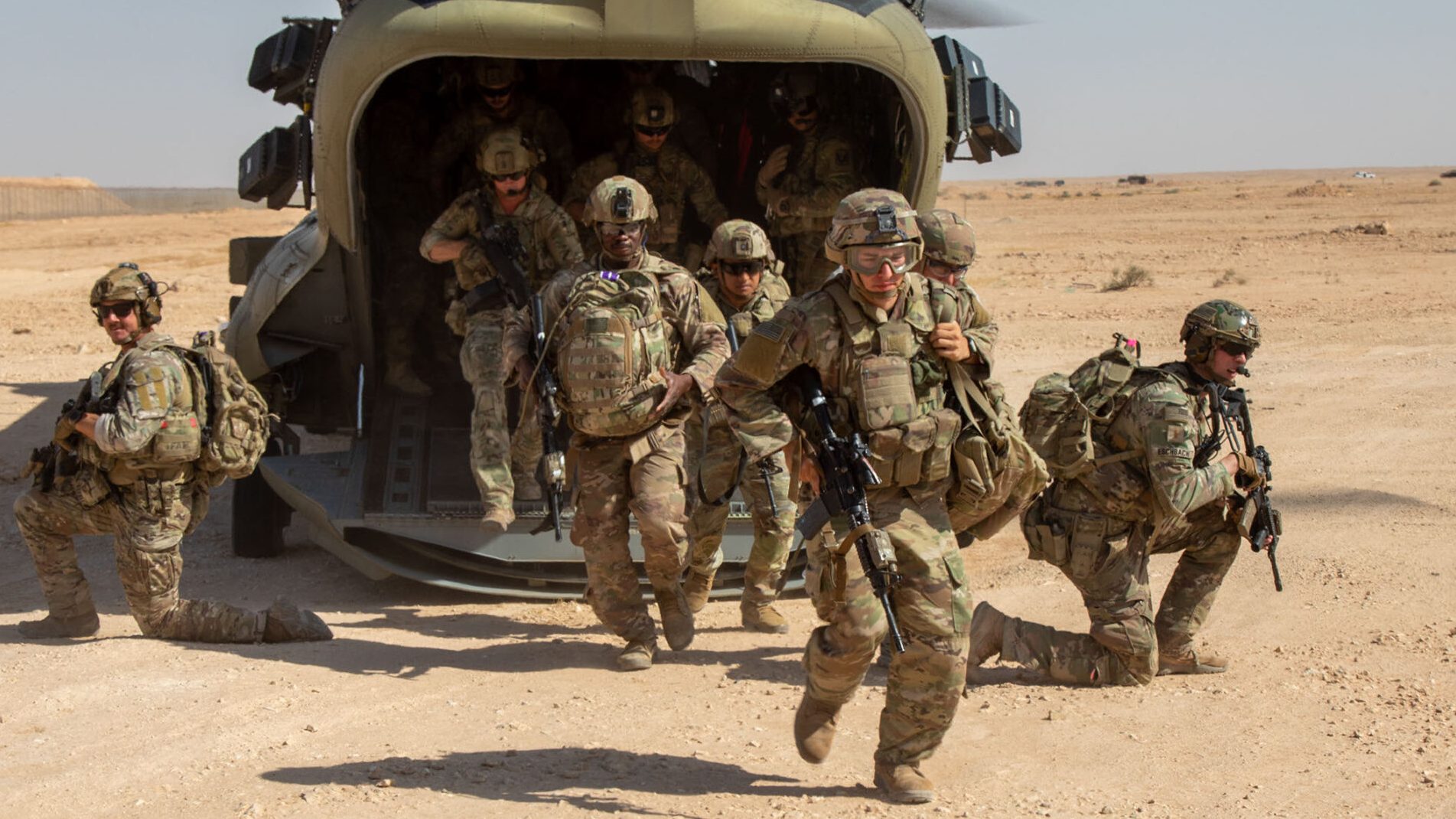

The U.S. government’s plan to transition to a new bilateral security agreement with Iraq is about as clear as mud.
Speaking to reporters on Friday, two U.S. officials said that the relationship between U.S. and Iraq is fundamentally shifting but repeatedly refused to say how many of the roughly 2,500 U.S. troops currently in Iraq will withdraw from the country – if any – under the new agreement and where those service members who stay behind will be based. Both officials spoke on condition of anonymity under rules established by the State Department.
“We’re not going to speak to our plans concerning specific base locations or troop numbers,” a senior defense official said. “We have been and will continue to be in active dialogue with the government of Iraq about how our bilateral relationship will evolve, which will certainly include changes to our force posture and troop numbers. For now, that remains in a planning process and under review. Until those decisions are reached, we won’t be providing specific information on numbers and locations regarding something that hasn’t been decided.”
The United States has had a fraught relationship with Iraq for several decades. In 1991, the U.S military led a coalition that ejected the Iraqi army from Kuwait. Then in 2003, a U.S.-led coalition invaded Iraq to oust its leader Saddam Hussein. The war turned into a bitter insurgency, which American forces had largely defeated when they left the country in December 2011.
Subscribe to Task & Purpose today. Get the latest military news and culture in your inbox daily.
Then in 2014, the Islamic State group conquered large swathes of northern Iraq, prompting the Iraqi government to invite U.S. troops to return. Since then, the United States has led a coalition of countries against ISIS in Iraq and Syria.
Although ISIS lost its last territorial enclave in Syria back in 2019, the fight against the terrorist group in both Iraq and Syria continues. Seven U.S. troops were injured during an Aug. 29 operation in Iraq’s Anbar province that resulted in the deaths of four top ISIS commanders.
Still, Iraqi Prime Minister Mohammed al-Sudani has been under pressure from Iran to end the U.S. military presence in Iraq, according to the Wall Street Journal, which recently reported that the U.S and Iraqi governments had reached a bilateral security agreement, under which most American troops will leave Iraq by 2026, leaving only a small contingent behind.
On Friday, a senior administration official provided reporters with a broad outline for the transition from the current Combined Joint Task Force – Operation Inherent Resolve, the U.S.-led coalition against ISIS in Iraq and Syria, to the bilateral security agreement between Iraq and the United States.
“I would like to emphasize that this is an evolution of the military mission in Iraq,” the senior administration official said. “We are moving toward the type of productive, long-term security relationship the United States has partners around the world.”
The first phase of the plan will run until Sept. 30, 2025, and it involves bringing the U.S.-led coalition’s military mission in Iraq to an end, and “ending the presence of coalition forces in certain locations in Iraq, as mutually determined,” said the senior administration official, who did not elaborate from where coalition troops might withdraw.
However, the United States and Iraq have agreed that the coalition will be able to continue to carry out counter-terrorism mission from Iraq against ISIS in Syria under the second phase of the plan, which lasts until the end of September 2026 – if not longer, said the senior administration official, who added that the timeline for the second phase of the plan could be adjusted by future political leaders in Iraq, the United States, and coalition nations.
The senior administration official stressed that “the United States is not withdrawing from Iraq,” but when a reporter pressed if that meant no U.S. troops were leaving Iraq, the official did not rule out future changes to American force levels in the country.
“As we go through this transition into a bilateral relationship, there could very well be changes in the numbers, changes in the activities that we do, aligning ourselves better with the bilateral interests that we have supporting the capabilities of the Iraqi security forces,” the senior administration official said. “A lot of that is going to be an ongoing discussion, and we will see where that takes us.”
The latest on Task & Purpose
- Marine sergeant major fired from West Coast bootcamp now in brig amid investigation
- Army sends troops, artillery to the Aleutian Islands as Russian planes again fly near Alaska
- Marine who died trying to reach trapped Osprey pilots honored for final bravery
- Former West Point garrison commander cleared of most charges that led to firing
- Navy’s first fully gender-integrated submarine joins the fleet. Here’s what that means
